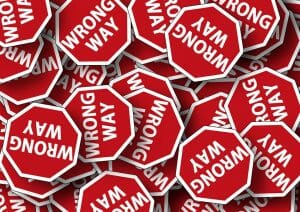Angela Merkel, Michele Obama, Malala, Rosa Parks, J.K. Rowling, Greta Thunberg. Les femmes sont aujourd’hui des leaders, des politiciennes, des PDG, des responsables, des militantes, des gardiennes de la paix, toutes actrices du changement. Mais si elles ont un rôle important à jouer dans nos sociétés, les femmes sont aujourd’hui encore obligées de se battre pour leurs droits. Ces droits fondamentaux sont nombreux: protection contre la violence et la discrimination, meilleur état de santé physique et mental possible, éducation, propriété, vote, salaire égal pour travail égal…
Des campagnes mondiales pour le droit de vote à la montée de #MeToo et à l’activisme numérique, les femmes ont lentement fait progresser leurs droits. Quels progrès les femmes ont-elles réalisés ? Et combien de travail reste-t-il à accomplir ? Découvre-le dans notre fiche d’anglais sur les “women’s rights” !
Women’s rights – A brief history
Women’s early fight for equality
Women’s struggle for equal rights is centuries old. As early as in ancient Greek society, stories of feminist struggles are reported. Coming from the high Athenian society, Agnodice disguised herself as a man to follow the medical courses of the famous doctor Herophilus. She passed the exam brilliantly and became a gynaecologist, without revealing that she was a woman.
Today, issues commonly associated with notions of women’s rights include: the right to integrity, health and autonomy, to be free from sexual violence, to vote, to enter into legal contracts, to have equal rights in family law, to work, to fair wages or equal pay, to have reproductive rights, to own property, and to education. However, claims for women’s rights have evolved with time and with political, legal, and societal victories. Here are some landmarks to remember.
Mid-XVIII, a milestone for women’s rights
In 1848, the first women’s rights convention to be organized by women was held in Seneca Falls, New York, in the United-States. During that convention, the Declaration of Sentiments is signed by 68 women and 32 men. This joined declaration is known as a grand movement for attaining the civil, social, political, and religious rights of women. Among other things, the declaration states that: “We hold these truths to be self-evident: that all men and women are created equal; that they are endowed by their Creator with certain inalienable rights; that among these are life, liberty, and the pursuit of happiness […]”.
A pioneer state, New Zealand was the first country to adopt universal suffrage in 1893. The second country to do so was Australia. Following its unification and independence, Australia extended women’s rights to vote and stand for election throughout its territory in 1901. Regarding the United Kingdom, women over the age of 30 who met minimum property qualifications gained the right to vote in 1918. In the United-States, following the ratification of the Nineteenth Amendment, women gained the right to vote in 1920. In France, the famous “suffragettes” marked history.
On March 19, 1911, International women’s Day (IWD) was marked for the first time, by over a million people in Austria, Denmark, Germany, and Switzerland. In the Austro-Hungarian Empire alone, there were more than 300 demonstrations. Women demanded that they be given the right to vote and to hold public office. They also protested employment sex discrimination. Since 1914, and in every country in the world, the IWD has been celebrated on March 8.
The United Nations, an organisation engaged in the fight for equality and women’s rights
In 1945, after two World Wars, the United Nations was formed, and women played an important part in its creation. Eleanor Roosevelt (President Roosevelt’s wife) pressed the United States to join and support the United Nations. It became the country’s first delegate in the UN. She served as the first chair of the UN Commission on Human Rights and oversaw the drafting of the Universal Declaration of Human Rights.
In 2010, the United Nations reaffirmed its commitment to participate in the search for equality. They created UN Women, an entity dedicated to gender equality and the empowerment of women. In 2014, UN Women Global Goodwill Ambassador Emma Watson launched the He For She Movement, a global effort that seeks to involve men and boys in achieving equality by taking action against negative gender stereotypes and behaviours.
Women’s rights in the digital space
Women and people speaking out about gender discriminations brought the fight to the public space. Speeches, demonstrations, public figures, media coverage, created a movement that was hard to miss. Today, with the digital age, a new space – the digital space – has opened. And, advocates of women rights intend to bring the fight in that sphere, making it louder, wider, and stronger.
The #MeToo movement, a digital wave of indignation
Social networks contribute to a faster and more global transmission of information. And the MeToo movement is proof that the digital sphere has given a new dimension to the fight for women’s rights. #MeToo is a movement against sexual harassment and sexual abuse where people publicized allegations of sex crimes committed by powerful and prominent men. Following the exposure of the widespread sexual-abuse allegations against Harvey Weinstein in October 2017, the movement began to spread virally as a hashtag on social media. This movement gave women a chance to speak out about sexual violence, which WHO later estimated to affect a third of the world’s women.
Emojis and women, a new fight against stereotypes
If the digital world has proven to be a good platform to convey the right messages, it can also reproduce the discriminations and stereotypes of the physical world. 72% of girls feel that society limits them by dictating what they should and should not do. Sometimes, these limiting messages can be found in unexpected and subtle places – like on your phone. In 2015, the emojis have seen their skin colour adapted to the different shades of society.
However, many people saw a need for improvement in gender equality among emojis. As far as the options for various emoji occupations, those such as police, detective, construction worker and so on were only available as male emojis, while female emojis were, until recently, limited to a princess, bride, flamenco dancer or… haircut recipient. As the Guardian summarized, “When it comes to women and emojis, it can feel a bit like the 1950s got trapped in your keyboard.”. Thankfully, in 2016, Google announced that 13 new professional “femojis” were going to be added to our keyboard. It was about time for expanded and more inclusive emoji choices.
Inspiring quotes about women’s rights
- Hillary Clinton became the first female nominee for president by a major political party in the United-States. As Clinton said while accepting her nomination, “When there are no ceilings, the sky’s the limit.”
- “We are struggling for a uniting word, but the good news is that we have a uniting movement.” – Emma Watson
- “Achieving gender equality requires the engagement of women and men, girls and boys. It is everyone’s responsibility.” – Ban Ki-Moon (8th Secretary-General of the United Nations)
- “Women’s liberation is the liberation of the feminine in the man and the masculine in the woman.” – Corita Kent (American Roman Catholic religious sister)
- “Excellence is the best deterrent to racism or sexism.” – Oprah Winfrey
How to use these examples during your exam?
Example of a question: For Women’s Day, the headteacher at your school wants to promote the fight against gender discrimination. He asks students to give speeches in class to sensitize their classmates to this cause. Write your speech. (120 words)
This question asks you about how to fight against discrimination at your own level. You will have to answer several questions:
- What is gender discrimination? How is that reflected in our levels?: You can give concrete daily life examples of discriminations you witnessed or suffered.
- Why is fighting against gender discrimination so important? Who is involved?: You need to involve all the people in the class, boys, and girls, by showing how gender discrimination affects everyone, in a negative way. You can talk appeal to their sense of responsibility or empathy for victims.
- How to take actions?: You can give some examples of ways for people to educate themselves about the issue or to give their support.
Conclusion
Women’s rights is a very broad subject, which has evolved considerably over the course of history. Its latest developments teach us that the fight against gender discrimination is everyone’s business. Progress has been made, not least as a result of people’s growing commitment to the cause, but the struggle is not over and much remains to be done to achieve equality.
Lire aussi : Globalization and its effects (Identity and Exchanges).











